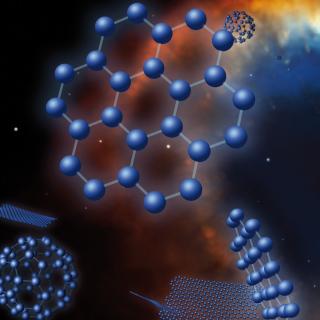Bibcode
Nidever, D. L.; Bovy, Jo; Bird, Jonathan C.; Andrews, Brett H.; Hayden, Michael; Holtzman, Jon; Majewski, Steven R.; Smith, Verne; Robin, Annie C.; García Pérez, Ana E.; Cunha, Katia; Allende Prieto, C.; Zasowski, Gail; Schiavon, Ricardo P.; Johnson, Jennifer A.; Weinberg, David H.; Feuillet, Diane; Schneider, Donald P.; Shetrone, Matthew; Sobeck, Jennifer; García-Hernández, D. A.; Zamora, O.; Rix, Hans-Walter; Beers, Timothy C.; Wilson, John C.; O'Connell, Robert W.; Minchev, Ivan; Chiappini, Cristina; Anders, Friedrich; Bizyaev, Dmitry; Brewington, Howard; Ebelke, Garrett; Frinchaboy, Peter M.; Ge, Jian; Kinemuchi, Karen; Malanushenko, Elena; Malanushenko, Viktor; Marchante, Moses; Mészáros, Szabolcs; Oravetz, Daniel; Pan, Kaike; Simmons, Audrey; Skrutskie, Michael F.
Referencia bibliográfica
The Astrophysical Journal, Volume 796, Issue 1, article id. 38, 16 pp. (2014).
Fecha de publicación:
11
2014
Revista
Número de citas
207
Número de citas referidas
194
Descripción
We employ the first two years of data from the near-infrared,
high-resolution SDSS-III/APOGEE spectroscopic survey to investigate the
distribution of metallicity and α-element abundances of stars over
a large part of the Milky Way disk. Using a sample of ≈10, 000
kinematically unbiased red-clump stars with ~5% distance accuracy as
tracers, the [α/Fe] versus [Fe/H] distribution of this sample
exhibits a bimodality in [α/Fe] at intermediate metallicities,
–0.9 < [Fe/H] <–0.2, but at higher metallicities
([Fe/H] ~+0.2) the two sequences smoothly merge. We investigate the
effects of the APOGEE selection function and volume filling fraction and
find that these have little qualitative impact on the α-element
abundance patterns. The described abundance pattern is found throughout
the range 5 < R < 11 kpc and 0 < |Z| < 2 kpc across the
Galaxy. The [α/Fe] trend of the high-α sequence is
surprisingly constant throughout the Galaxy, with little variation from
region to region (~10%). Using simple galactic chemical evolution
models, we derive an average star-formation efficiency (SFE) in the
high-α sequence of ~4.5 × 10–10
yr–1, which is quite close to the nearly constant value
found in molecular-gas-dominated regions of nearby spirals. This result
suggests that the early evolution of the Milky Way disk was
characterized by stars that shared a similar star-formation history and
were formed in a well-mixed, turbulent, and molecular-dominated ISM with
a gas consumption timescale (SFE–1) of ~2 Gyr. Finally,
while the two α-element sequences in the inner Galaxy can be
explained by a single chemical evolutionary track, this cannot hold in
the outer Galaxy, requiring, instead, a mix of two or more populations
with distinct enrichment histories.
Proyectos relacionados

Nucleosíntesis y procesos moleculares en los últimos estados de la evolución estelar
Las estrellas de masa baja e intermedia (M < 8 masas solares, Ms) representan la mayoría de estrellas en el Cosmos y terminan sus vidas en la Rama Asintótica de las Gigantes (AGB) - justo antes de formar Nebulosas Planetarias (NPs) - cuando experimentan procesos nucleosintéticos y moleculares complejos. Las estrellas AGB son importantes
Domingo Aníbal
García Hernández

Abundancias Químicas en Estrellas
La espectroscopía de estrellas nos permite determinar las propiedades y composiciones químicas de las mismas. A partir de esta información para estrellas de diferente edad en la Vía Láctea es posible reconstruir la evolución química de la Galaxia, así como el origen de los elementos más pesados que el boro, forjados principalmente en los interiores
Carlos
Allende Prieto